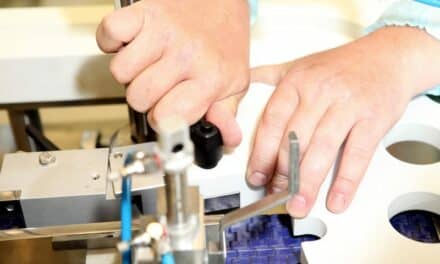In response to the April 2007 Soapbox article by Binseng Wang regarding evidence-based maintenance (EBMaint), I feel that the biomedical community has been practicing this all along and it simply has been known for years as trend analysis. Manufacturers of medical equipment rely upon feedback to help ensure they are producing the most reliable equipment available. For example, several years ago a very popular syringe-style infusion pump found its way into many biomed shops by the droves. The battery door latch would break often because it was plastic. This failure was an obvious trend that was communicated to the OEM. The OEM began producing the pump with a metal latch, and this fixed the problem. Trend analysis works and is not a broken system so long as the doors of communication with the OEM remain open.
I have to disagree with Binseng Wang’s view that EBMaint could somehow replace the OEM’s recommended PM cycle. He cites that these recommendations are often counterproductive and are based on liability concerns and revenue desires. My biomedical specialty is in life support equipment. The OEMs that produce this equipment require various stages of PM, from simple filter changes and cleaning to a full-blown overhaul. The premise is simple. The manufacturers have done their homework to ensure patient safety. Ventilators, for example, have backup batteries in them. Replacing them within the OEM guidelines is critical because batteries have a life span; they do not last forever. Hence, the OEM states that they need to be replaced every 2 years to ensure the proper functioning of the ventilator. Why would we take it upon ourselves to go against the OEM recommendation and do otherwise? Also, the most common components replaced in any ventilator are gas inlet and bacteria filters. As these filters occlude it affects the performance of the equipment. They must be changed, and the OEM again has done its homework to determine the frequency of this PM. Why would we want to reinvent the wheel with regard to PM cycles, especially with medical life support equipment?
Having worked for an OEM, I can assure you that the recommended PM cycles are done first with the patient’s safety in mind, and that means the overall dependable function of the equipment is examined in great detail after thousands of hours of operation prior to submitting the equipment for UL certification. The PM cycle is based upon trend analysis and not the desire to sell parts for revenue. It is a false assumption to think otherwise with regard to OEM recommendations. How would you feel if you found yourself or a loved one about to undergo surgery knowing that the PM was not done on the anesthesia equipment because someone simply deemed it unnecessary? It is a scary premise for sure!
Who of us would want to take on the liability if a patient incident happened knowing that the recommended PM was not done? Who do you think would win that potential lawsuit? Patient safety is the reason the biomedical profession began and should be why we are still here. Is there room to improve? Certainly! If anything, we need more communication with the OEMs, not less, nor do we need another “group” to dictate our maintenance policies. Who would these people be, and how would they have more expertise than the OEM itself? It simply cannot happen. We as biomedical engineers need to continue to run trend analysis for repair purposes and not for factory-recommended PMs. I do not believe our system is broken at all from the daily communication I have with in-house biomeds. If anything, we need to network our trending with each other across the board for information sake. Now that sounds like a logical place to start and not to reinvent the wheel with regard to sound maintenance policies already employed.
Joseph Shapona is the senior biomedical respiratory specialist at Pacific Biomedical Technical Support Services, Rancho Cordova, Calif. For more information, contact .




